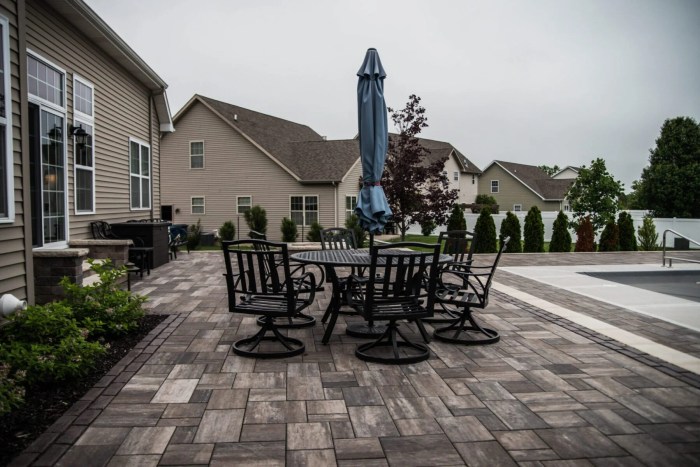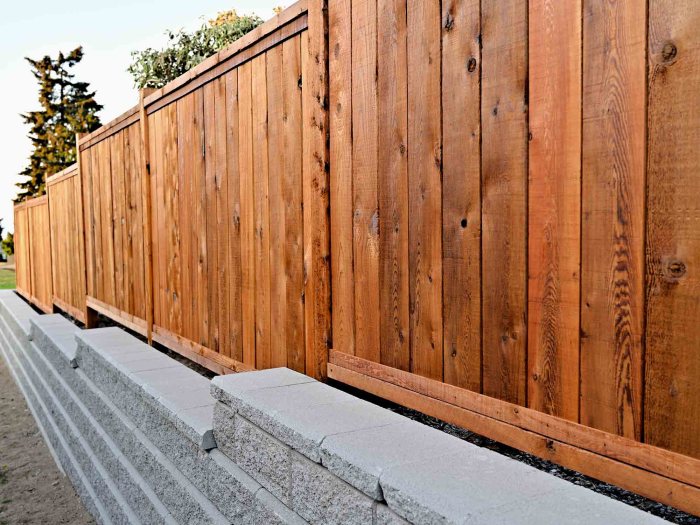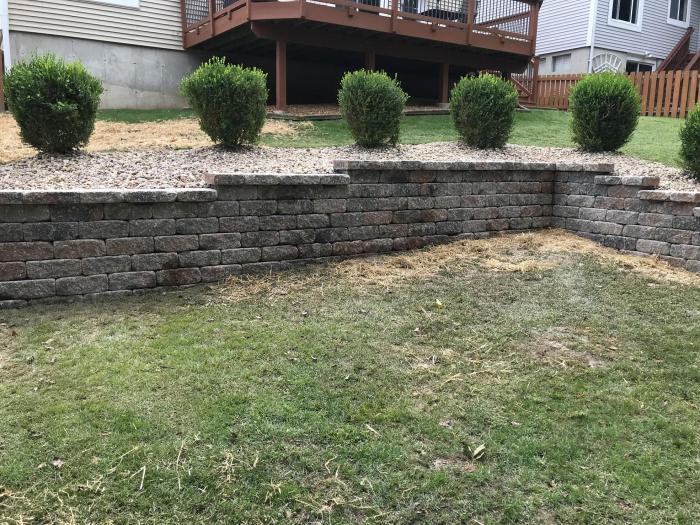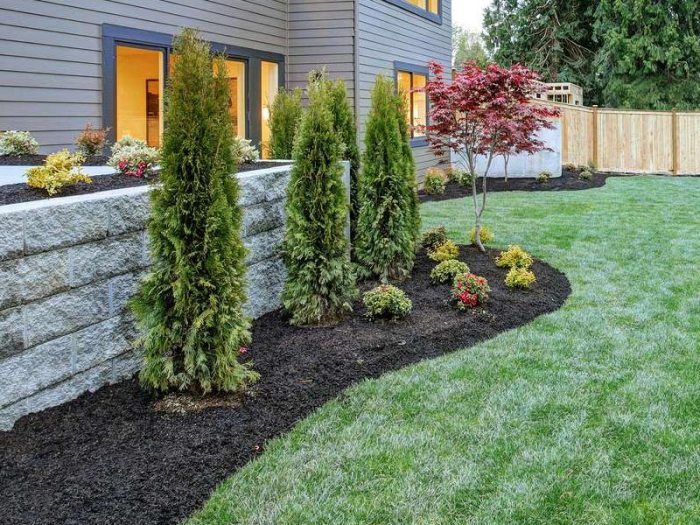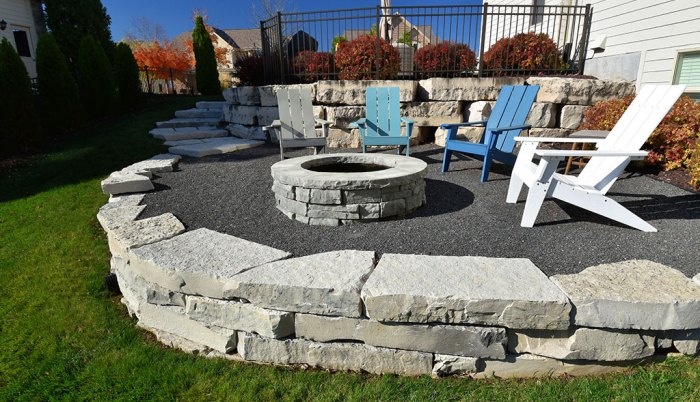Patio and Retaining Wall Contractors Near Me Your Guide
Patio and retaining wall contractors near me are crucial for transforming your outdoor space. They bring expertise in design, construction, and materials to create stunning patios and retaining walls. Choosing the right contractor ensures a project that meets your vision and budget while addressing potential challenges. Understanding their services, local options, and essential planning steps is key to a successful outcome.
This comprehensive guide explores various aspects, from finding local contractors to managing the project’s execution. We’ll cover essential steps like planning, budgeting, and selecting the right contractor, along with helpful tips on maintenance and potential issues. This information is designed to empower you with the knowledge needed to navigate the process effectively and create the outdoor space of your dreams.
Introduction to Patio and Retaining Wall Contractors
Patio and retaining wall contractors are professionals specializing in the design, construction, and maintenance of outdoor living spaces. These experts possess the necessary skills and experience to transform yards into functional and aesthetically pleasing areas. Their expertise extends to various aspects of these projects, ensuring a high-quality outcome.
These contractors handle everything from initial design consultations and material selection to the actual construction and final landscaping. Their knowledge ensures that projects are completed efficiently and meet the client’s specifications and preferences. The process involves meticulous planning and execution to avoid costly errors and ensure the longevity and stability of the structures.
Types of Patio and Retaining Wall Contractors
Contractors specializing in patios and retaining walls can cater to various project types, from residential homes to commercial properties. Understanding the specific needs of each project type is crucial.
| Contractor Type | Typical Services Offered | Pricing Ranges (USD) |
|---|---|---|
| Residential | Design consultation, material selection, patio construction (decks, pavers, concrete), retaining wall construction, landscaping, and minor site work. | $2,000 – $50,000+ (depending on size, materials, complexity). |
| Commercial | Design consultation, material selection, patio construction (larger-scale projects, potentially including outdoor dining areas), retaining wall construction (often larger and more complex), landscaping, site work, permitting. | $10,000 – $200,000+ (depending on size, materials, complexity). |
Services Offered by Patio and Retaining Wall Contractors
A wide array of services is commonly provided by these professionals. These services cover all stages of a project, from initial consultation to completion.
- Design Consultation: Contractors typically offer initial consultations to discuss the client’s needs, preferences, and budget. This stage involves site assessments, developing ideas, and presenting options. This is often a free or low-cost service to help clients understand the feasibility and costs of their projects.
- Material Selection: Qualified contractors assist in choosing appropriate materials for the project. Factors considered include durability, aesthetics, budget, and local regulations. Examples of materials include concrete, pavers, wood, stone, and various types of landscaping materials.
- Construction: This is the core service, encompassing the actual building of the patio and retaining wall structures. This includes excavation, foundation work, installation of materials, and final finishing touches. Precise construction ensures structural integrity and longevity.
- Landscaping: A complete project often includes landscaping elements like planting, grading, and irrigation to enhance the overall aesthetic appeal. This contributes to the final look and feel of the outdoor space.
Importance of Hiring Qualified Contractors
Hiring qualified contractors is essential for successful patio and retaining wall projects. Their expertise and experience are crucial to achieving desired results. Unqualified contractors can lead to issues with structural integrity, material selection, and project timelines.
- Structural Integrity: Qualified contractors possess the knowledge to design and construct structures that meet local building codes and ensure long-term stability.
- Material Selection: Experts understand the durability and suitability of different materials for specific applications, ensuring the project withstands the elements and lasts for years to come.
- Project Management: Qualified contractors effectively manage projects from start to finish, ensuring timely completion within budget and specifications.
- Risk Mitigation: Experienced contractors identify potential risks and implement appropriate measures to prevent problems and ensure safety throughout the project.
Common Challenges Faced by Homeowners
Homeowners often face challenges during patio and retaining wall construction. Understanding these challenges can help homeowners make informed decisions and manage expectations.
- Budget Constraints: Project costs can quickly escalate if not managed effectively, so a detailed budget and realistic cost estimates are essential.
- Project Timeline: Construction timelines can be affected by unforeseen circumstances, so clear communication and realistic expectations are important.
- Material Availability: Material shortages can impact project timelines, so it’s crucial to confirm material availability and plan contingencies.
- Permitting and Regulations: Understanding local building codes and obtaining necessary permits is essential to avoid delays and ensure the project complies with regulations.
Finding Contractors Near Me
Locating reliable patio and retaining wall contractors in your area is a crucial step in ensuring a successful project. This process involves exploring various avenues and employing careful evaluation techniques to identify qualified professionals. Understanding the methods for finding contractors, assessing their credibility, and verifying their licensing and insurance is paramount for a smooth and positive experience.
Finding the right contractor is more than just a search; it’s about selecting a partner who understands your vision and can execute it with precision and expertise. Thorough research and careful consideration are key to avoiding potential pitfalls and selecting a contractor who meets your needs and expectations.
Methods for Locating Contractors
Various methods are available for finding suitable patio and retaining wall contractors. Online platforms are increasingly popular, but local networking and recommendations can also be highly effective. Direct contact with potential contractors should be part of the selection process.
Online Platforms for Finding Contractors, Patio, and Retaining Wall Contractors near me
Numerous online platforms facilitate the search for contractors. These platforms often offer detailed profiles, portfolios, and customer reviews. Some prominent examples include specialized contractor directories, online review sites, and social media groups.
- Specialized contractor directories provide comprehensive listings of contractors, categorized by their services and location. These directories often allow you to filter results by specific needs, budget, and style preferences.
- Online review sites, such as Yelp or HomeAdvisor, offer valuable insights into past customer experiences. Reviews can provide information about a contractor’s work quality, communication skills, and professionalism.
- Social media groups dedicated to home improvement projects can connect you with local contractors. These groups can facilitate direct communication and networking opportunities.
Evaluating Contractor Credibility and Reliability
Evaluating potential contractors involves more than just browsing profiles. It necessitates scrutiny of their experience, qualifications, and past performance. A comprehensive approach to evaluating contractors ensures that the chosen professional aligns with your needs and expectations.
- Look for detailed portfolios showcasing previous projects. High-quality images and descriptions of completed work can offer valuable insights into the contractor’s abilities and design sensibilities.
- Check references and testimonials from previous clients. Contacting previous clients can offer valuable insights into the contractor’s communication skills, work ethic, and ability to meet deadlines.
- Thoroughly research their experience and qualifications. Understanding the contractor’s expertise and background can assure their proficiency in executing the project.
Importance of Checking Contractor Licenses and Insurance
Valid licenses and insurance are crucial indicators of a contractor’s professionalism and legal compliance. Protecting your interests requires verifying these crucial aspects.
- Verify that the contractor holds the necessary licenses and permits for their work in your area. This verification ensures that the contractor is legally authorized to perform the services required.
- Inquire about the contractor’s liability insurance coverage. Insurance protects you from potential financial liabilities arising from the project’s execution.
Comparing Online Platforms for Finding Contractors
Different online platforms offer varying features and benefits. Evaluating these differences is critical for selecting the most suitable platform for your needs.
| Platform | Pros | Cons |
|---|---|---|
| Specialized Contractor Directories | Targeted listings, detailed profiles, and often filtering options | May have limited visibility compared to broader platforms |
| Online Review Sites | Customer reviews, ratings, and photos of completed projects | It may not have extensive contractor listings, but the reliability of reviews can vary |
| Social Media Groups | Direct communication, local networking, and potential for referrals | May lack structured profiles, verification of contractors can be challenging |
Project Planning and Design
Planning a patio and retaining wall project requires careful consideration of various factors to ensure a successful outcome. A well-defined plan, precise measurements, and thoughtful material selection are crucial for achieving the desired aesthetic and functionality. Thorough project planning, from initial design concepts to final execution, sets the stage for a rewarding experience.
A detailed project plan, encompassing design, materials, and contractor communication, is vital for a seamless process. This meticulous approach reduces potential issues and ensures the final product aligns with expectations.
Essential Steps for Planning
Careful planning is fundamental for a successful patio and retaining wall project. This includes understanding the project scope, gathering necessary permits, and developing a timeline. The planning process should consider factors like budget, site constraints, and desired aesthetic.
- Site Assessment and Analysis: A comprehensive site assessment is paramount. This involves evaluating the terrain, soil conditions, existing structures, and proximity to utilities. This crucial step identifies potential challenges and informs the design process. This will determine the best design and materials to use for the specific site.
- Accurate Measurements: Precise measurements are essential for accurate design and material estimations. Measurement errors can lead to costly revisions or delays. Professional measuring tools, like laser levels and measuring tapes, should be used.
- Permitting and Regulations: Understanding local building codes and regulations is critical. This step ensures compliance and avoids costly delays or project rejection. It’s wise to consult with local authorities to understand specific requirements.
- Budgeting: A realistic budget is crucial for making informed decisions throughout the project. This includes material costs, labor expenses, and potential unforeseen expenses.
- Timeline Development: Establishing a realistic timeline helps manage expectations and ensures the project is completed within a reasonable timeframe. Consider potential delays and build buffer time into the schedule.
Accurate Measurements and Site Assessments
Precise measurements are essential for accurate material estimations and ensure the project’s success. Inaccurate measurements lead to costly errors. A thorough site assessment identifies potential challenges and informs the design, ultimately contributing to a more cost-effective and efficient project.
- Precise Measurements: Use appropriate tools, like laser levels and measuring tapes, to ensure accuracy. Multiple measurements and verification steps are crucial for minimizing errors.
- Soil Analysis: Understanding the soil type and composition is vital for determining the appropriate retaining wall foundation and design. This prevents settling and structural issues.
- Slope and Grade: Accurate measurements of the slope and grade are necessary for proper drainage and stability. The slope and grade impact the structural design and drainage requirements of the project.
Material Selection
The selection of appropriate materials significantly impacts the aesthetics, durability, and cost of the patio and retaining wall. Consider factors like durability, maintenance, and aesthetic appeal.
- Patio Materials: Common patio materials include concrete, pavers, stone, and composite decking. Each material offers unique aesthetic qualities and maintenance requirements. For example, concrete patios require less maintenance than paver patios.
- Retaining Wall Materials: Options for retaining walls include concrete, stone, brick, and composite materials. Each material offers unique aesthetic qualities, durability, and installation requirements. Stone retaining walls offer a natural aesthetic but may require more maintenance.
- Budget and Aesthetics: Balance budget considerations with desired aesthetics. Different materials have varying price points. Choose materials that align with the project’s budget and desired visual impact.
Design Options
A variety of design options are available for patios and retaining walls, allowing customization to suit individual needs and preferences. Consider factors like size, shape, and desired functionality.
- Patio Design: Options include simple rectangular designs, elaborate multi-level patios, or integrated seating areas. The design should reflect the intended use and the overall style of the property.
- Retaining Wall Design: Designs can range from simple straight walls to curved or terraced walls. The design should be appropriate for the slope and soil conditions. Consider adding features like decorative stone or built-in seating.
- Integration with Landscape: Design elements should seamlessly integrate with the existing landscaping. Consider color schemes, plant choices, and overall aesthetic harmony.
Questions to Ask Contractors
During initial consultations, it’s crucial to ask clarifying questions about the contractor’s experience, process, and approach. This will help in making informed decisions.
- Experience and Expertise: Inquire about the contractor’s experience with similar projects. Ask about the team’s experience, their specialized skillset, and relevant certifications.
- Project Timeline: Ask for a detailed project timeline and estimated completion dates. Understand potential delays and contingencies.
- Warranty and Guarantees: Inquire about warranties and guarantees for materials and workmanship. Ask for details about the contractor’s guarantee process.
- Pricing Structure: Understand the pricing structure, including material costs, labor fees, and any additional charges. Request a detailed breakdown of costs.
Budgeting and Cost Estimation: Patio And Retaining Wall Contractors Near Me
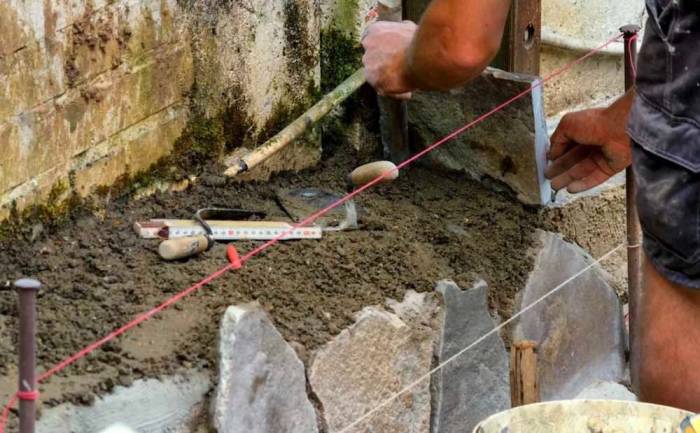
Source: medium.com
Planning a patio or retaining wall project requires careful budgeting. Understanding the factors that influence costs, exploring cost-saving strategies, and comparing different material options are crucial steps in achieving a project that meets your budget and expectations. Accurate cost estimation prevents unpleasant surprises down the road.
Accurate cost estimation is vital for successful patio and retaining wall projects. A well-defined budget helps manage expectations and ensures the project stays on track. Thorough planning and understanding the variables involved are key to a smooth and financially responsible project.
Factors Influencing Patio and Retaining Wall Costs
Several factors significantly impact the overall cost of your patio or retaining wall project. These factors include material costs, labor expenses, design complexity, site conditions, and permit fees. For example, a complex, multi-tiered retaining wall with unusual stonework will naturally command a higher price than a simple, straight-line wall. Similarly, challenging site conditions, such as steep slopes or rocky terrain, can increase excavation and construction costs.
Cost-Saving Strategies
Several strategies can help you manage costs without sacrificing quality. Consider selecting materials that offer good value for the price. For instance, pre-fabricated pavers or concrete slabs might be more affordable than custom-cut stone. Also, exploring options for DIY labor (with proper guidance) can reduce labor costs. Remember, proper planning and careful selection of materials are crucial in minimizing the overall project cost.
Materials and Their Costs
The choice of materials directly affects the project’s overall cost. Different materials offer varying levels of durability, aesthetics, and maintenance requirements. Common materials include concrete, stone (natural and manufactured), pavers, and wood. Natural stone, for example, can be more expensive than concrete pavers, but its unique aesthetic appeal might justify the higher cost.
Different Design Options and Their Costs
Different design options will result in varying costs. A simple, straight-line patio might be considerably cheaper than a complex, multi-level design incorporating curves, water features, or intricate patterns. The complexity of the design directly correlates with the labor hours required and the materials needed. Consider your design preferences alongside your budget to make informed choices.
Typical Costs for Patio and Retaining Wall Materials (Approximate)
| Material | Cost per Square Foot (Approximate) | Labor Cost per Hour (Approximate) |
|---|---|---|
| Concrete Patio | $5-$15 | $25-$50 |
| Stone Patio (Natural) | $15-$50 | $30-$60 |
| Stone Patio (Manufactured) | $10-$30 | $25-$45 |
| Paver Patio | $8-$25 | $20-$40 |
| Wood Patio | $10-$30 | $25-$50 |
| Simple Retaining Wall (Concrete) | $10-$25 | $30-$60 |
| Retaining Wall (Natural Stone) | $20-$60 | $40-$80 |
Note: These costs are approximate and can vary greatly depending on specific materials, labor rates, location, and project scope. Always obtain detailed quotes from multiple contractors before making a final decision.
Contractor Selection and Hiring
Choosing the right patio and retaining wall contractor is critical for a successful project. This step demands careful consideration, thorough research, and a clear understanding of your needs and budget. A poorly chosen contractor can lead to costly delays, inferior workmanship, and ultimately, a less-than-satisfactory final product. Understanding the evaluation process and contracting essentials is key to a smooth and rewarding experience.
Evaluating Potential Contractors
Selecting a qualified contractor begins with a comprehensive evaluation process. Key factors to consider include their experience, reputation, licensing, insurance, and references. Scrutinize their portfolio of past projects, paying close attention to quality, craftsmanship, and adherence to timelines. Checking for proper licensing and insurance is paramount to protect your investment and ensure legal compliance.
Multiple Bids and Proposal Comparisons
Getting multiple bids is crucial for informed decision-making. This allows for direct comparisons of pricing, scope of work, and contractor approaches. Carefully review each proposal, ensuring that the scope of work aligns with your project specifications. Consider the experience of the contractor, the warranty offered, and the reputation they have in the local area. Comparing proposals enables you to choose the best fit for your budget and expectations. For instance, a contractor offering a lower price might overlook crucial details or employ less skilled labor, potentially leading to higher costs in the long run.
Contractor Selection Based on Needs and Budget
Matching the contractor to your needs and budget is paramount. Consider the project’s complexity, the desired level of customization, and the timeframe for completion. If you have specific preferences or require a unique design, choose a contractor with a proven track record in handling similar projects. A reputable contractor will be able to communicate effectively, provide realistic timelines, and be responsive to your concerns. For example, if you need a large, complex retaining wall project, a general contractor with a proven track record of large-scale projects might be the ideal choice.
Essential Elements of a Contract
A well-defined contract is essential for a successful project. Crucial elements include a detailed scope of work, clear timelines, payment schedules, and warranties. Specify the materials to be used, the payment terms, and the penalties for missed deadlines or breaches of contract. Include provisions for disputes and arbitration. This ensures that both parties are on the same page, mitigating potential conflicts and ensuring the project proceeds as planned. A detailed contract serves as a legally binding agreement that protects the interests of both the contractor and the client.
Project Progress and Deadline Tracking
Creating a project checklist is vital for monitoring progress and adhering to deadlines. The checklist should Artikel specific tasks, assign responsibilities, and set realistic deadlines for each stage of the project. Regular communication and progress updates are key to managing expectations and addressing any potential issues proactively. This proactive approach can avoid costly delays and ensure the project stays on schedule. For example, include milestones for site preparation, material delivery, construction, and final inspection. Documenting these milestones helps to track progress and ensures accountability.
Project Execution and Management
Once you’ve selected a contractor, the actual construction phase begins. This stage demands careful oversight and communication to ensure the project proceeds smoothly and meets your expectations. Effective project management is crucial to prevent costly delays and unforeseen issues.
Proper planning and communication are key to a successful project. Clear expectations, defined timelines, and open channels of communication with the contractor are essential for a positive experience. This section details the steps involved in patio and retaining wall construction, the importance of communication, potential problems, and how to handle them.
Common Steps in Patio and Retaining Wall Construction
The construction process typically follows a series of steps. These steps are crucial for the quality and longevity of your project. The contractor should provide a detailed schedule that details each stage, including timelines for each task.
- Site Preparation: This involves clearing the area, grading the land to the desired specifications, and marking out the construction boundaries. Proper site preparation ensures a solid foundation for the patio or retaining wall.
- Foundation Work: For retaining walls, this is critical to ensure stability. It involves digging trenches, installing proper drainage systems (if needed), and pouring concrete footings. For patios, the foundation may include leveling and compacting the ground.
- Framing/Structure: This step involves building the structural framework for the patio or retaining wall, using materials like wood, concrete blocks, or stone. The quality of the framing directly impacts the longevity and strength of the project.
- Installation of Materials: This involves laying pavers or other chosen patio materials, installing retaining wall materials, and completing any finishing touches. Careful placement and adherence to design specifications are essential.
- Finishing Touches: This includes installing landscaping features, adding edging, and completing any other desired aesthetic enhancements. Proper finishing touches enhance the overall look and appeal of the completed project.
Importance of Clear Communication with the Contractor
Open and frequent communication is paramount. It allows for prompt resolution of issues and ensures alignment between your vision and the contractor’s execution.
- Establish clear expectations from the start. Detail your desired aesthetic, materials, and timelines. This will form the basis for the project and help avoid misunderstandings later.
- Schedule regular meetings to discuss progress and address any concerns. This helps track the project’s status and facilitates early issue resolution.
- Use a written contract that details the scope of work, payment schedule, and timelines. This acts as a reference point for both parties.
Potential Issues and Solutions
Construction projects can encounter unforeseen problems. Having a plan to address these issues is crucial for maintaining the project’s timeline and budget.
- Weather Delays: Unforeseen weather conditions (e.g., rain, extreme heat) can significantly impact the construction schedule. A contingency plan for delays should be part of the project plan. A contractor experienced with local weather patterns will likely have a more effective plan.
- Material Shortages: Unexpected delays in material deliveries can cause significant project setbacks. A proactive contractor will have alternative material sourcing strategies to minimize disruption.
- Quality Control Issues: Materials or workmanship may not meet the agreed-upon standards. This necessitates a clear process for addressing quality concerns and ensuring rectification. Regular inspections and detailed quality control measures by both parties are essential.
Importance of Regular Site Visits and Inspections
Regular site visits allow you to monitor progress, ensure quality, and address any concerns promptly. This active involvement helps maintain control over the project’s execution.
- Schedule visits to coincide with key milestones. This allows you to observe the contractor’s work and confirm that it aligns with the plan.
- Take detailed notes during each visit, including observations and any necessary corrections. Documenting these details is vital for addressing issues effectively.
- Maintain open communication with the contractor during your visits, addressing any concerns or questions.
Potential Problems and Solutions Table
| Potential Problem | Solution |
|---|---|
| Weather delays | Have a contingency plan with alternative timelines and strategies to account for potential weather impacts. |
| Material shortages | Establish backup suppliers and maintain open communication channels with the contractor to address potential supply chain issues. |
| Quality control issues | Implement a clear quality control process, including regular inspections, and establish a procedure for addressing any discrepancies. |
| Budget overruns | Regularly review the project budget with the contractor to identify any potential cost escalations and discuss cost-effective alternatives. |
Illustrative Examples
Bringing your patio and retaining wall vision to life requires understanding the possibilities. This section offers concrete examples of various designs, materials, and project outcomes to inspire your project.
Patio Design Example
A contemporary patio design might feature a sleek, rectangular layout with a smooth, poured concrete surface. To enhance the aesthetic, consider incorporating a built-in fire pit, perhaps with a surround made of flagstone or a similar material. Lighting strategically placed around the perimeter and within the fire pit creates an inviting atmosphere, ideal for evening gatherings. Integration with the surrounding landscaping, such as low-growing shrubs or carefully placed planters, enhances the overall visual appeal. A pergola or shade structure could offer protection from the elements while still allowing for natural light to filter through.
Retaining Wall Styles and Applications
Various retaining wall styles cater to different needs and aesthetics. A simple, straight retaining wall made of stacked stone is ideal for supporting a sloping yard and providing a natural, rustic look. This approach is particularly suitable for areas with existing stone or where a traditional feel is desired. A more modern approach might involve a gabion wall, constructed from wire mesh filled with stone, offering a unique texture and a sturdy structure for significant earth stabilization. Gabion walls are adaptable to a range of slope heights and provide a more contemporary aesthetic. A curved retaining wall could be incorporated into a landscape design, blending seamlessly with the natural contours of the terrain. This style adds a dynamic element, especially when used in conjunction with a curving pathway or other landscaping features.
Case Studies of Successful Projects
One successful patio project involved transforming a small, unused corner of a backyard into a charming dining area. The project included a custom-designed patio with a built-in barbecue, and the patio was constructed from flagstone. The owners were delighted with the outcome, as the space now serves as a central hub for family gatherings and outdoor dining. Another project showcased the integration of a retaining wall to create a level patio space. The wall, constructed from natural stone, complemented the surrounding landscape, adding visual interest and structural stability.
Materials Used in Construction
The choice of materials significantly impacts the aesthetic and longevity of your patio and retaining wall. Flagstone, with its natural variations in color and texture, adds a warm, inviting ambiance to patios. Concrete pavers come in a vast array of colors and styles, allowing for a wide range of design possibilities. Wood decking, treated for durability, provides a classic, natural look. Stone, whether natural or manufactured, offers diverse options in color, shape, and texture, from the rugged appearance of fieldstone to the smooth elegance of polished granite. Brick, available in various colors and styles, is another popular choice, especially for creating a traditional or rustic appeal.
Patio and Retaining Wall Design Options
| Design Option | Description/Image | Materials | Application |
|---|---|---|---|
| Rustic Patio | A patio with a flagstone surface, stone seating walls, and a pergola with wooden beams. | Flagstone, wood, stone | Ideal for a backyard with a natural aesthetic. |
| Modern Patio | A sleek patio with a poured concrete surface, integrated lighting, and a built-in fire pit. | Concrete, steel, stone | Perfect for a contemporary home with a focus on clean lines. |
| Simple Retaining Wall | A straight retaining wall constructed from stacked stone. | Natural stone | Suitable for supporting a slope and creating a natural look. |
| Gabion Retaining Wall | A retaining wall made from wire mesh filled with stone. | Wire mesh, stone | Ideal for significant slope stabilization and a contemporary look. |
Wrap-Up
In conclusion, finding the right patio and retaining wall contractors near you is a crucial step in enhancing your outdoor living space. This guide has provided a framework for navigating the process, from initial research to project completion and maintenance. Remember to carefully consider your needs, budget, and the contractor’s qualifications. By following these steps, you’ll be well-equipped to make informed decisions and realize your outdoor design vision.
